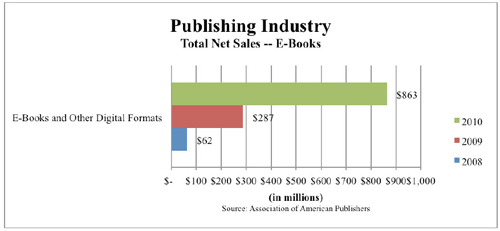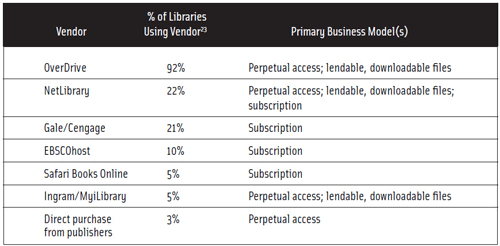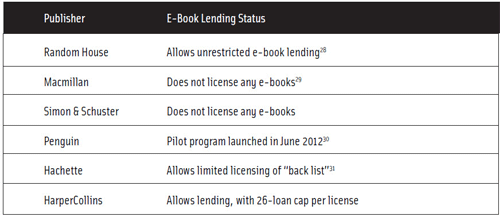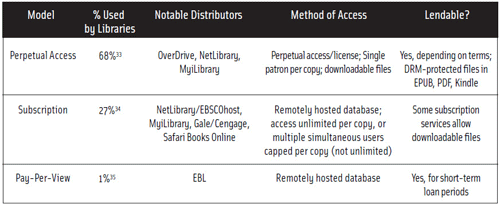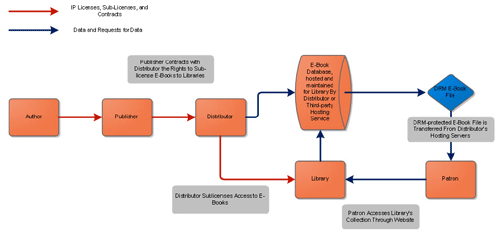by David R. O'Brien, Urs Gasser, and John Palfrey*
Berkman Center Research Publication No. 2012-15
NOTICE: THIS WORK MAY BE PROTECTED BY COPYRIGHT
YOU ARE REQUIRED TO READ THE COPYRIGHT NOTICE AT THIS LINK BEFORE YOU READ THE FOLLOWING WORK, THAT IS AVAILABLE SOLELY FOR PRIVATE STUDY, SCHOLARSHIP OR RESEARCH PURSUANT TO 17 U.S.C. SECTION 107 AND 108. IN THE EVENT THAT THE LIBRARY DETERMINES THAT UNLAWFUL COPYING OF THIS WORK HAS OCCURRED, THE LIBRARY HAS THE RIGHT TO BLOCK THE I.P. ADDRESS AT WHICH THE UNLAWFUL COPYING APPEARED TO HAVE OCCURRED. THANK YOU FOR RESPECTING THE RIGHTS OF COPYRIGHT OWNERS.
* The authors wish to thank June Casey, Lisa Junghahn, and Jesse King for their research assistance, Caroline Nolan, Alicia Solow- Niederman, and the staff at the Berkman Center for Internet & Society for their advice and support in connection with the workshop and in the development of this briefing document, with special thanks to the Charles H. Revson Foundation and the participants at the “E-Books in Libraries” workshop which took place on February 24, 2012 in New York. This publication would not have been possible without the invaluable contributions from these individuals and institutions.
Table of Contents:
• Document Background and Scope
• The E-Book Market
• E-Books in Libraries
• Licensing and Lending Practices
o Overview
o The Licensing Chain
• Business Models
o Perpetual Access Model
o Subscription Model
o Pay-Per-View Model
• Selected Challenges Facing Libraries and Publishers
o Cannibalization of Consumer Sales
o Front List E-Book Titles
o Patron Demand
o Friction in Lending Arrangements
o Competition
o DRM, Interoperability, and Privacy
o Externalities
• Selected Resources
o Notable Reports and White Papers
o Informative News Articles and Blog Posts
o Books
Amazon, the largest retailer of books in the U.S., announced in May 2011 that e-book sales now outnumber print-on-paper sales ... [t]he AAP’s January 2012 “Monthly Statshot” Reports that the monthly sales figure for children’s and young adults e-book titles in January 2012 increased to 22.6 million from 3.9 million in January 2011 ... “[a]dult e-books ... set to overtake adult paperbacks as the highest volume product for publishers in America.” ...
However, not every publisher makes its e-books available to distributors for library access. The sudden popularity of e-readers, coupled with the shift to digital formats and the ease with which patrons can browse and check out e-books from their local library’s website, have caused publishing companies to abstain from – and in some cases rethink their approach to – library e-book lending programs. For example, Josh Marwell, a vice president at HarperCollins, published the following remarks in March 2011 after HarperCollins announced its 26-circulation cap per e-book policy: “We have serious concerns that our previous e-book policy, selling e-books to libraries in perpetuity, if left unchanged, would undermine the emerging e-book eco-system, hurt the growing e-book channel, place additional pressure on physical bookstores, and in the end lead to a decrease in book sales and royalties paid to authors.” Many of the other major trade publishers have expressed similar reservations. Brian Napack, the U.S. president of Macmillan Publishers, succinctly summarizes his case for hesitation: “The fear is I get one library card and never have to buy a book again.”
At present, a fraction of the 6 largest trade publishers permit e-book lending in libraries. Among those that do license to libraries, many publishers use license terms to define the manner in which the e-books can be used....
Although Random House has some of the least restrictive licensing practices among the “Big Six” publishers, it recently raised e-book prices by a considerable amount (as much as 300 percent, in some cases). According to Random House’s statement on this price increase, “our new e-book pricing framework is to bring our titles in price-point symmetry with our Books on Tape audio book downloads for library lending.... We believe our new library e-pricing reflects the high value placed on perpetuity of lending and simultaneity of availability for our titles.”...
[M]ost publishers (and by extension, distributors) only license, but do not sell, e-books to libraries. These licenses can contain a variety of restrictions on use, some of which are determined by the publisher and others by the distributor. Occasionally, the library can negotiate the terms that originate from the distributor.
The distributors commonly offer full-service packages to a library, which include the licensing rights to e-books and also services to host the e-book collection for the library....
For example, the license may restrict the number of simultaneous users who can access a copy or the total number of simultaneous users who can access a database; it can also set prohibitions on certain types of uses, like inter-library loans, or limits on simultaneous usage and specify expiration terms or triggering events....
[M]any publishers seem to believe that forgoing library lending programs altogether yields more benefits than the alternative and, consequently, may be said to hold a superior bargaining position in these negotiations....
Although the distributor cannot grant more rights to libraries than the publisher has granted to the distributor, the distributor may choose to grant fewer rights or impose additional restrictions on how the e-book may be accessed and used....
[A]s the patron accesses the e-books that the library has sublicensed, the patron may also be required to assent – sometimes implicitly merely by using a website, sometimes more explicitly through a “click through” agreement – to contractual terms....[that] may still pose additional limitations and restrictions on access and use of software or e-books....
The original NetLibrary e-book database was launched in 1999. This early platform allowed patrons to search and view the full text of e-books through Internet browsers, and add notes, bookmarks, and links to external resources outside the database. James Galbraith notes that “Reading from cover to cover was an option ... but the emphasis was on research use, similar conceptually to the periodical database NetLibrary emulated.” ...
In addition to the cost of licensing each copy, libraries may also have to pay annual “platform maintenance fees” to the vendor for the costs of hosting the library’s e-book collection....
Although distributors and libraries often speak of e-book “ownership,” the majority of e-books are licensed, not sold. Consequently, the library can be said to have purchased access to the e-books, which is in turn subject to the rights and limitations set forth in the agreement between the distributor and library. Often, the license grants access to the e-book in perpetuity, so long as the library complies with any additional obligations specified in the license, or until an event that triggers expiration of the license – for instance, upon reaching “26 loan circulations.”...
Using OverDrive’s library management software, known as “Digital Library Reserve,” public libraries can purchase access to individual copies of e-book titles that are made available to patrons through a separate website portal, typically hosted on the library’s website domain. ... If a patron desires to check out an e-book for use on a computer, e-reader, or mobile device (e.g., a PC, Mac, Kindle, NOOK, Android smart phone, iPhone or iPad), the patron must download OverDrive’s “Media Console” software. This software enables the patron to download DRM-protected e-books from her library’s collection to her computer or mobile device, and also allows her to transfer the file to an e-reader or another compatible device. Throughout the check out process and loan period, the OverDrive platform manages the interaction between the e-book file, e-reader, and the library’s collection management system....
Hard Questions/Additional Discussion Points
• High demand for popular, bestselling titles, especially in 18-month period following publication, may directly compete with retail e-book offerings – average holds to copies ratio at libraries is 6:1
• Not all publishers currently make titles available to libraries through publishers [distributors]
• Overall lack of transparency of licensing terms between publisher and distributor, and between distributor and library
• How to balance e-books sales to consumers with the availability of e-books to libraries?
• License restrictions can impede libraries’ ability to archive, preserve access, facilitate interlibrary loans, etc.
• Competition from the technology sector (e.g., Amazon, Google, among others)
• Although trade publisher participation is the highest for this model, only a limited number of the major trade publishers currently make titles available for e-lending ...
Unlike the perpetual access model in which libraries can retain access to e-books after the initial fee (depending on the terms), access in the subscription model terminates if the subscription is not renewed....
While the overall cost of access to these titles is often lower than the perpetual access model, many vendors only provide access to “back list” titles, which for many libraries is less desirable because front list titles are the most popular with patrons. Costs per user (as opposed to costs per title) can also be deceptively high, as subscription model pricing is often based upon the population or active membership being served by the library....
Not all vendors allow subscription e-books to be downloaded, although some, like NetLibrary, allow chapters to be downloaded or, in some circumstances, entire books for full lending periods.... Adobe Digital Editions, which supports lending period limitations through DRM, is often used to regulate the amount of time that a patron spends with a file....
Libraries can also purchase access to “pre-packaged collections,” which are organized by subject and provide access to an array of titles for a pre-determined price....
Hard Questions/Additional Discussion Points
• Larger publishers generally do not use this model, as it is much more difficult to monetize at a price point that is reasonable to both the publishers and libraries
• Limited access to “front-list titles”
• Libraries do not always have flexibility to choose which titles are included in a subscription package
• Subscriptions can be a challenge to sell because libraries frequently object to “ongoing expenditures” unless “the price per title is extremely low”
• Some have noted that at these low rates a “publisher would need to lease [a] title for at least ten years to see the same profit” as e-books sold under other models ...
A smaller number of distributors use a “pay-per-view” model. The 2011 Library Journal E-Book Survey found that this model is used by less than 1% of public libraries. In this model, as in the subscription model, libraries pay an ongoing fee in exchange for the ability to display a list of titles to patrons, but the library must “rent” individual copies from this database for an additional fee per copy. Unlike the subscription model, which provides access to many titles for a high annual fee – not all of which might be used by patrons – the ongoing fee is much lower than the subscription model, and additional fees are only charged when a patron wants access to an e-book....
EBL has also integrated a patron-demand driven purchase model into its pay-per-view model, whereby after a certain number of short-term loans (i.e., “rentals”) are triggered for a given title, the library can automatically or manually purchase the title under a limited access license, which allows the library to access the work for up to 325 24-hour periods in any given year. If the e-book is accessed more than 325 days, the library can purchase a second copy of the e-book, extend additional short-term loan periods (each triggering additional charges), or the library can wait until the 1-year anniversary of the acquisition, upon which the counter is reset without additional payment for the next 1-year period.
In 2007, the University of Texas library launched a pilot program using EBL’s pay-per-view e-book delivery model. Using ten years worth of usage data metrics from their other subscription services, including NetLibrary, the Library determined that a relatively small percentage of e-books had been accessed more than four times. Consequently, the library decided to set the auto-purchase trigger at the fourth use of an e-book in the EBL system. When a patron accesses a title in the EBL system, the patron is allowed to view it for an initial 5-minute period. Upon expiration, the patron is prompted with a message that indicates the browsing period has elapsed and she can continue by creating a loan or by returning to the catalog. If the patron elects to create a loan, the short-term loan period is triggered (in this case, for a $50 or higher charge to the library) and the patron is granted access for a 24-hour period....
A license is distinguishable from a sale. Section 109 under the Copyright Act limits a copyright owner’s exclusive right to distribution, and permits the owner of a copy of a copyright work to resell or otherwise dispose of that copy after the initial purchase. However, if a copy is instead licensed, the copyright owner retains ownership of the copy and merely permits the purchaser to make limited uses of the work...
E-books offer many advantages over print-on-paper books and have tremendous potential to change the way we interact with media....
The digital transition has also encumbered the ability of libraries to collect, organize, maintain, and provide access to information and resources. Some public librarians have expressed frustration with the challenges associated with limited access to e-books that are in high demand, the difficult-to-negotiate licensing terms offered by e-book vendors, the technical issues associated with providing patrons with seamless access to e-book titles across multiple e-reader platforms, and the overall expense of procuring and maintaining an e-book collection....
Publishers fear that e-books that are available in a public library at no extra cost to patrons will compete directly with e-books sold through retailers....
Cannibalization is a central factor for publishers. Publishers fear that e-books that are available in a public library at no extra cost to patrons will compete directly with e-books sold through retailers. According to one publisher, past experience illustrates that content in a digital format is less valuable than content in an analog format. This shift has encouraged publishers to take measures to minimize cannibalization between the digital and analog market segments, and protect the value of bestsellers by, for example, using some of the parameters discussed in pervious sections or by forgoing participation in library e-lending programs altogether.
Additionally, many publishers believe that the online medium does not offer the same market segmentation between book consumers (i.e., people who purchase books from a retailer) and library patrons (i.e., people who check out books from a public library) that the physical medium affords. Specifically, the process of checking out a print-on-paper book, which requires an individual to physically travel to the library to check out and return a book, is not the same for an e-book. E-books in public libraries are often made searchable and downloadable through library websites. A patron can “check out” an e-book without entering the library, and an e-book copy automatically reverts to the library without patron intervention at the end of a loan period. Without the physical limitations that exist in a brick-and-mortar library system, some publishers argue that ease of access to e-book titles weakens the dichotomy of the consumer and library patron segments; this outcome compromises revenue streams as more individuals turn to libraries for access to e-books rather than purchasing the content from retailers....
80% of library borrowing is focused on 20% of the library’s overall collection, and front list titles from the Big Six publishers comprise a significant percentage of this 20%. To address the issues like this, HarperCollins announced in February 2011 a change in licensing terms under which it now requires libraries to purchase a new license after an e-book has been circulated 26 times. For a popular e-book available for 2-week loan periods, the license would have to be renewed after one year in constant circulation....
According to a Pew Internet and American Life Project study, “56% of e-book borrowers from libraries say that at one point or another they had tried to borrow a particular book and found that the library did not carry it,” and “52% of e-book borrowers say that at one point or another they discovered there was a waiting list to borrow the book.” ... Pew reports that only “12% of readers of e-books borrowed an e-book from the library in the past year,” and “58% of all library card holders say they do not know if their library provides e-book lending services.”
Through licensing agreements, publishers and distributors often impose contractual restrictions on libraries ... This “friction” plays a key role in differentiating business models, delineating market segments (e.g., purchasers of books vs. public library patrons), and protecting publishers’ revenue streams from cannibalization.
Examples of friction in a contractual agreement include limits on:
• ownership (e.g., whether a e-book file is owned, licensed, or subscribed to)
• time (e.g., windows on distribution, delays between patron loan request and download, limitations on the permissible period for which a library can loan an e-book to patrons)
• age of e-book (e.g., distribution release windows based upon time from publication)
• variable price points (e.g., one-time fee, or fees based on use/access)
• place (e.g., the location where a patron can access/download an e-book – over the Internet or only on library premises)
• scarcity of copies (e.g., a cap on the number of copies accessible per user, per library, etc.)
• bundling of materials (e.g., package sales to databases or subject-specific collections, rather than individual titles)...
[T]he right to possess a licensed e-book file is not absolute, which raises the possibility of sudden loss of access.
A recurring theme throughout our February workshop involved the proper level of “friction” – the restrictions imposed on access and use under the terms of the arrangement – and, more generally, the intersection of contract and copyright law....[T]he key may lie in understanding how to weigh the types of friction against one another or which types of friction should be considered key design features in lending arrangements....
While these may not be “silver bullet” solutions to the underlying problem ...
[P]rime members are permitted to read one book per month from Amazon’s “Lending Library,” which contains more than 66,000 titles, including “100 current and former New York Times Bestsellers.” ... [S]ome commentators have called the legality of this program into question on grounds that Amazon may not have the appropriate rights to make such offerings....
DRM restrictions on e-books are notoriously unpopular with librarians because the technology limits their ability to make e-books easily accessible to patrons. ... DRM sometimes restricts the technologies that make digital works accessible to the hearing and seeing impaired. On a very basic level, DRM can also inhibit the ability of an individual to make use of a file across multiple devices. That said, copyright infringement remains a significant threat to publishers, and without DRM, publishers might not be willing to make any works available to libraries.
The use of DRM in e-book lending also feeds fears on the part of librarians about reader privacy. Technologies that track the usage of a given e-book might, librarians fear, lead to the identification of readers of certain works in ways that would not have been possible in a purely analog lending model....
Additionally, publishers and other industry stakeholders have recently encountered litigation and regulatory scrutiny, including a pending state class action lawsuit against Apple, Macmillan, and Penguin filed by private litigants as well as a pending Department of Justice antitrust suit against Apple, alleging antitrust violations for collusion and price-fixing. While these legal actions are not directly related to the e-books in library debate, they are costly and only add to the dynamic flux in the market, potentially threatening the possibility of lawful collaborations and new business opportunities. Some commentators have suggested that these events may be indicative of negative consumer perceptions of the publishing industry....
[C]opyright infringement puts revenues at risk ...[Due to] the impact of disruptive innovation, stakeholders face a number of crosscutting challenges that add to the already strained environment.
-- E-Books in Libraries: A Briefing Document Developed in Preparation for a Workshop on E-Lending in Libraries, by David R. O'Brien, Urs Gasser, and John Palfrey

